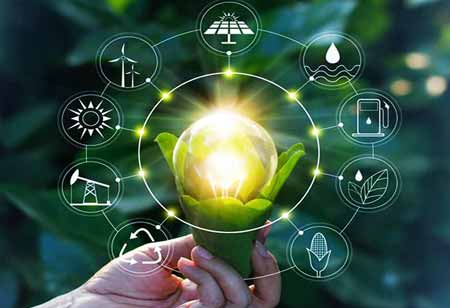Thank you for Subscribing to Electrical Business Review Weekly Brief
I agree We use cookies on this website to enhance your user experience. By clicking any link on this page you are giving your consent for us to set cookies. More info
Energising Communities: Distributed Energy Resources Spark Local Energy Revolution
The transformative potential of DERs, including microgrids, rooftop solar installations, and small-scale wind turbines, extends far beyond energy generation, shaping the future of local energy landscapes.

By
Electrical Business Review | Friday, August 18, 2023
Stay ahead of the industry with exclusive feature stories on the top companies, expert insights and the latest news delivered straight to your inbox. Subscribe today.
In an era marked by the quest for energy sustainability and resilience, distributed energy resources (DERs) have emerged as catalysts for change, igniting a revolution in how communities generate and consume power.
FREMONT, CA: The transformative potential of DERs, including microgrids, rooftop solar installations, and small-scale wind turbines, extends far beyond energy generation, shaping the future of local energy landscapes.
Microgrids: Fortresses of Energy Independence
Microgrids, often hailed as the cornerstone of modern energy resilience, empower communities to seize control of their power destiny. These self-contained energy networks bolster grid stability during outages and act as incubators for innovative energy solutions.
Microgrids can electrify previously underserved areas in remote regions, reducing dependency on distant power plants and lengthy transmission lines. Moreover, microgrids can integrate renewable energy sources such as solar panels and wind turbines, fostering sustainable energy practices and reducing carbon footprints.
Rooftop Solar: Redefining Energy Ownership
Rooftop solar installations once considered a fringe technology, have swiftly become emblematic of a new era in energy production. By transforming rooftops into energy-generating assets, individuals, businesses, and communities redefine their relationship with power.
The transition to rooftop solar democratises energy ownership, enabling consumers to generate electricity, reduce utility bills, and contribute surplus power to the grid. This bottom-up approach drives energy savings and ushers in a cultural shift towards eco-conscious living.
Small-Scale Wind Turbines: Catching the Wind of Change
In the journey towards decentralised energy generation, small-scale wind turbines emerge as symbols of innovation and sustainability. These turbines, often installed in urban and suburban environments, harness the power of local winds to generate electricity.
Small-scale wind turbines empower communities to tap into local resources, fostering a sense of energy autonomy. By integrating wind energy into their energy mix, communities contribute to load balancing, enhance energy security, and participate in the global transition to cleaner energy sources.
Navigating Challenges and Collaboration
While DERs offer many benefits, their successful integration requires careful navigation of technical, regulatory, and social challenges. Harmonising diverse energy sources, upgrading aging grid infrastructure, and ensuring equitable access to clean energy are just some of the hurdles communities face.
Collaboration between stakeholders – including local governments, utilities, technology providers, and residents – plays a pivotal role in overcoming these challenges. By fostering an ecosystem of innovation, policy adaptation, and shared responsibility, communities can unlock the full potential of DERs.
A Resilient and Empowered Energy Future
In the grand tapestry of global energy transformation, DERs are the threads that weave together resilience, sustainability, and community empowerment. As microgrids strengthen energy independence, rooftop solar shifts the balance of power, and small-scale wind turbines catch the wind of change, communities worldwide embrace a future where energy is consumed and actively shaped. This distributed energy revolution portrays a world in which energy is a collective endeavor, nourishing communities, economies, and the planet.








